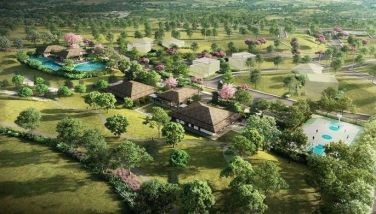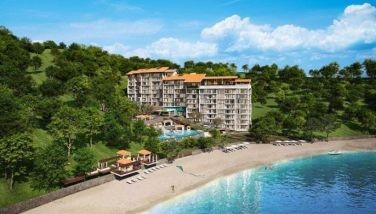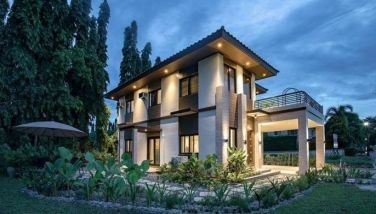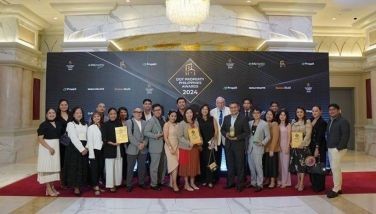Sagay Marine Reserve springs back to life
July 4, 2004 | 12:00am
Sagay, Negros Occidental boasts of teeming marine resources in its blue clear waters which speak not only of its abundance but a promise of sustainability. This was not the scenario way back in 1982.
Starting life anew for Sagay Marine Reserve is a story of a long struggle, according to Director Vicente S. Paragas of the Department of Environment and Natural Resources (DENR), Region 6. It was the fruit of synergistic efforts of the DENR, local government and coastal communities of Sagay and other stakeholders, the latest of which was the approval by Environment and Natural Resources Secretary Elisea G. Gozun of a mangrove rehabilitation project through the Poverty Alleviation Program of President Arroyo.
When Sagay was still a booming town of Negros Occidental, one of its barangays named Old Sagay was considered a fishing village that supplied the fish requirements of the town’s prosperous barangays. Its abundant marine resources lime fishes, rare seashells, sea urchins, crabs and corals invited trawlers to the place. Fishermen used all kinds of illegal fishhing methods including dynamites. Soon, fish catch became scarcer especially near its island of Molocabc where many women lost their husbands because of dynamite fishing and deep sea diving.
In 1982, Angel Alcala, a marine biologist of Siliman University who later became a DENR secretary, made a research on the Carbin Reef of Sagay. He found out that the corals were dwindling so he convinced the local government to rehabilitate the reef. This led to the issuance of Municipal Ordinance 2 declaring Carbin Reef as a fish sanctuary. Through the joint efforts of Siliman University and the local governmennt a watchtower was constructed at the Carbin Reef, which became a landmark of the municipality in the middle of the sea.
During his incumbency as DENR secretary, Alcala launched the Coastal Environment Program (CEP). Its objective was to rehabilitate denuded coastal areas by planting mangroves primarily to provide spawning grounds for fishes, and rehabilitate seagrass beds and coral reefs. It was aimed also at providing livelihood opportunities to coastal communities and make them responsible stewards of the coastal areas to insure a sustainable livelihod resources.
Sagay coastal areas became one of the pilot sites of the CEP. The DENR and local government of Sagay joined hands in educating the fishermen on proper fishing methods and tried to make them internalize the sense of belongingness to this rich marine reserve. Communities were organized and trained, and some of the fishermen who were noted for illegal fishing were hired as "bantay-dagat". A Protected Area Management Board (PAMB) was also created.
Sagay coastal area consists of 32,000 hectares and is now included in the National Integrated Protected Area System (NIPAS). Region 6 statistics show that now, this the rich marine life in this Reserve has about 3,000 hectares of seagrass beds consisting of nine species.
It also boasts of 60 genera of hard black and soft corals. Its coastal areas which has about 500 hectares of mangroves, more than 100 hectares of which are reforested, consists of 32 species of true mangrove species and more than 10 mangrove-associated species.
Starting life anew for Sagay Marine Reserve is a story of a long struggle, according to Director Vicente S. Paragas of the Department of Environment and Natural Resources (DENR), Region 6. It was the fruit of synergistic efforts of the DENR, local government and coastal communities of Sagay and other stakeholders, the latest of which was the approval by Environment and Natural Resources Secretary Elisea G. Gozun of a mangrove rehabilitation project through the Poverty Alleviation Program of President Arroyo.
When Sagay was still a booming town of Negros Occidental, one of its barangays named Old Sagay was considered a fishing village that supplied the fish requirements of the town’s prosperous barangays. Its abundant marine resources lime fishes, rare seashells, sea urchins, crabs and corals invited trawlers to the place. Fishermen used all kinds of illegal fishhing methods including dynamites. Soon, fish catch became scarcer especially near its island of Molocabc where many women lost their husbands because of dynamite fishing and deep sea diving.
In 1982, Angel Alcala, a marine biologist of Siliman University who later became a DENR secretary, made a research on the Carbin Reef of Sagay. He found out that the corals were dwindling so he convinced the local government to rehabilitate the reef. This led to the issuance of Municipal Ordinance 2 declaring Carbin Reef as a fish sanctuary. Through the joint efforts of Siliman University and the local governmennt a watchtower was constructed at the Carbin Reef, which became a landmark of the municipality in the middle of the sea.
During his incumbency as DENR secretary, Alcala launched the Coastal Environment Program (CEP). Its objective was to rehabilitate denuded coastal areas by planting mangroves primarily to provide spawning grounds for fishes, and rehabilitate seagrass beds and coral reefs. It was aimed also at providing livelihood opportunities to coastal communities and make them responsible stewards of the coastal areas to insure a sustainable livelihod resources.
Sagay coastal areas became one of the pilot sites of the CEP. The DENR and local government of Sagay joined hands in educating the fishermen on proper fishing methods and tried to make them internalize the sense of belongingness to this rich marine reserve. Communities were organized and trained, and some of the fishermen who were noted for illegal fishing were hired as "bantay-dagat". A Protected Area Management Board (PAMB) was also created.
Sagay coastal area consists of 32,000 hectares and is now included in the National Integrated Protected Area System (NIPAS). Region 6 statistics show that now, this the rich marine life in this Reserve has about 3,000 hectares of seagrass beds consisting of nine species.
It also boasts of 60 genera of hard black and soft corals. Its coastal areas which has about 500 hectares of mangroves, more than 100 hectares of which are reforested, consists of 32 species of true mangrove species and more than 10 mangrove-associated species.
BrandSpace Articles
<
>
- Latest
Latest
Latest
October 23, 2024 - 9:30am
By May Dedicatoria | October 23, 2024 - 9:30am
October 11, 2024 - 3:45pm
October 11, 2024 - 3:45pm
October 10, 2024 - 11:30am
October 10, 2024 - 11:30am
October 5, 2024 - 12:08pm
October 5, 2024 - 12:08pm
September 24, 2024 - 1:00pm
September 24, 2024 - 1:00pm
September 13, 2024 - 4:00pm
September 13, 2024 - 4:00pm
Recommended





























